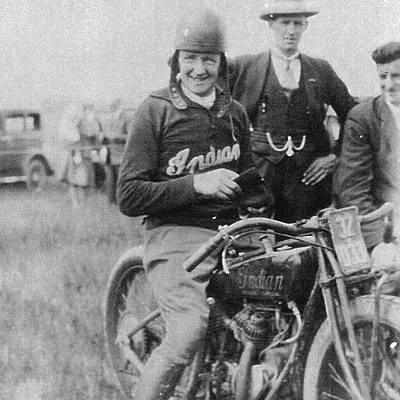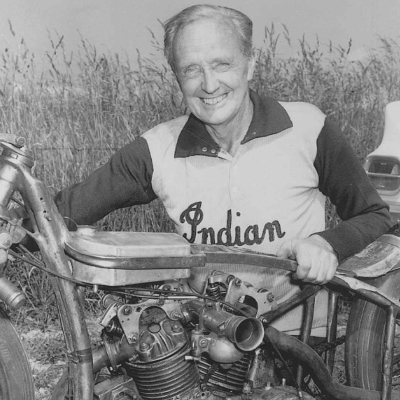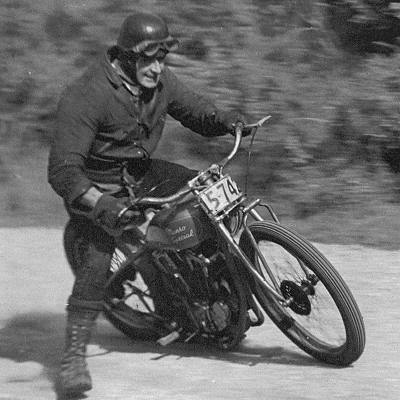The Burt Munro Story
Herbert ('Burt') James Munro was born on the 25th March 1899 at Edendale, a country town 30km from Invercargill, New Zealand.
Burt bought his Indian motorbike new in 1920 as a standard model Indian Scout which had a side valve engine of 600cc capacity. The price was ₤120 with acetylene lighting although he could have bought an electric lighting model but it was quite a bit more expensive at the time. The engine number was 50R627.
The Indian Scout was very advanced for it’s time with a helical gear transmission and a mechanical oil pump working on a total loss system. The top speed was in the region of 60mph.
Early in the 1920′s Burt started tuning his bike for speed and eventually had it exceeding 90mph in side valve form. In the mid 1930's Burt made patterns for an overhead valve engine conversion but initially he was quite disappointed to find it was no faster than the original side valve. However, with determination Burt persisted with the tuning and in 1940 he gained the New Zealand Motorcycle speed record reaching a speed of 120.8mph. At this stage Burt found the original con-rods would not stand up to the strain so he started making his own using old Ford truck axles. Burt had very little specialist equipment so a lot of his machining work was done by hand.
After overcoming the earlier con-rod failures, Burt experienced engine big-end failure. As the lubrication was achieved by a total loss system, which had no direct feed to the big-ends and crank pin, the rollers often came out blued and fused to the big-end cage. Eventually Burt made new fly wheels and increased the diameter of the crank pin which was bored to feed oil direct to the big-ends. He also fitted an Indian Chief oil pump and in doing so changed the lubrication to a dry sump system.
Over the next few years Burt gradually increased the bore and stroke which enlarged the engine to just on 1000cc capacity.
Burt cast his own pistons using a large kerosene blow lamp and casting dies he made himself. Another modification he made was to the primary transmission. Burt made sprockets for this and fitted a triplex chain on the primary drive in place of helical gears as this was more efficient. The clutch is basically standard with extra springs fitted to cope with the extra power the engine was developing. In order to get closer ratios in the gear box Burt cut the layshaft and welded two pinions from an Indian Chief onto his Scout layshaft in order to get closer ratios on the three speed gear box.
Originally, Indian Scouts had only two cams which limited the valve timing so Burt changed this to a four cam system, allowing him to alter the valve timing on both the inlet and exhaust valves.
Over the years, Burt also built four different "Streamliner" shells for the Indian Scout, based on the aerodynamic shape of a goldfish .
On his first trip taking the Indian Scout to the Bonneville salt Flats in Utah, USA on 20th August 1962, Burt achieved a speed of 179mph, something people attending the famous “Speed Week” found absolutely unbelievable considering the age of both the bike and the rider.
Another of Burt's bikes which should have received a lot more publicity than it did was his 1936 MSS 500cc Velocette. It was lightened and lowered in true Munro style to be under 200 pounds in weight.
After suffering a partial stroke in 1977 Burt found he had a lack of co-ordination and concentration when trying to work on the machines, leaving him very frustrated. He sold us his 1920 Indian Scout - the "Munro Special", his 1936 Velocette 500 plus various engine parts and motorcycle trailer so that they could remain in his beloved Southland.
|  |
|







